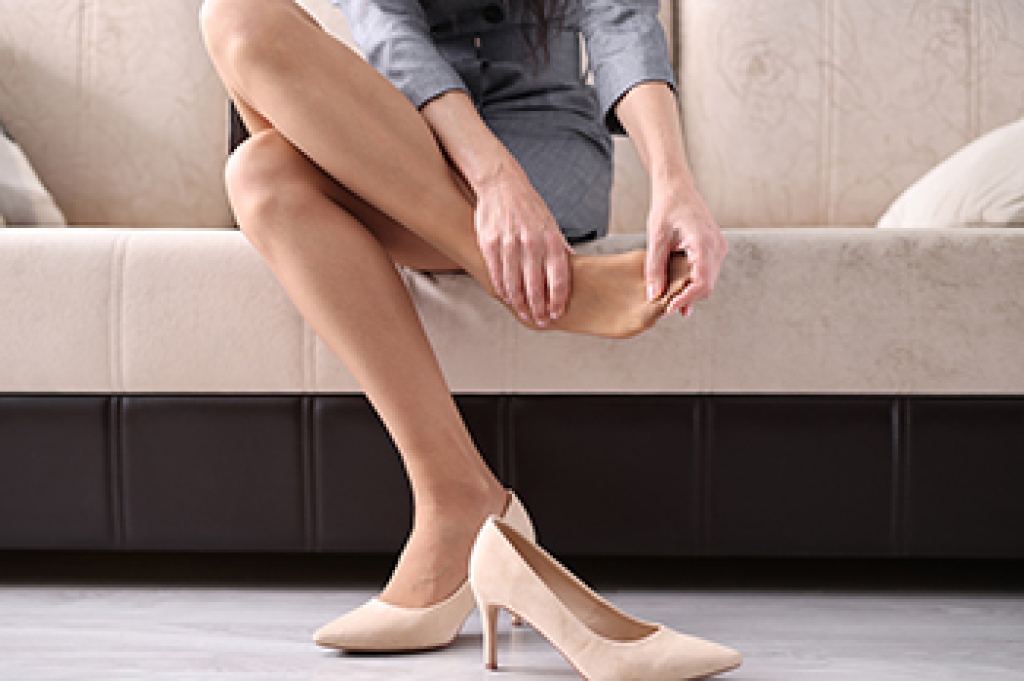 Diabetes is a systemic disorder characterized by high blood sugar. One area of the body that this condition is particularly hard on is the feet. Diabetes is associated with diabetic neuropathy, a form of nerve damage caused by high blood sugar levels. The nerves in the lower limbs are frequently affected. When these nerves are damaged, sensory information does not travel properly from the lower limbs to the brain. This means that pain signals from foot injuries, such as cuts and scrapes, are less likely to register and injuries go unnoticed until they have gotten progressively worse. Diabetes also causes poor circulation. Without the blood delivering adequate nutrients to damaged areas, foot injuries will heal slowly and poorly. Even small cuts can quickly become diabetic foot wounds and ulcers, with an increased risk of infection and related complications due to another problem associated with diabetes — an insufficient immune system. Being proactive about foot care is the best way to prevent diabetic foot wounds and their many complications. To learn more about caring for diabetic feet, please consult with a chiropodist.
Diabetes is a systemic disorder characterized by high blood sugar. One area of the body that this condition is particularly hard on is the feet. Diabetes is associated with diabetic neuropathy, a form of nerve damage caused by high blood sugar levels. The nerves in the lower limbs are frequently affected. When these nerves are damaged, sensory information does not travel properly from the lower limbs to the brain. This means that pain signals from foot injuries, such as cuts and scrapes, are less likely to register and injuries go unnoticed until they have gotten progressively worse. Diabetes also causes poor circulation. Without the blood delivering adequate nutrients to damaged areas, foot injuries will heal slowly and poorly. Even small cuts can quickly become diabetic foot wounds and ulcers, with an increased risk of infection and related complications due to another problem associated with diabetes — an insufficient immune system. Being proactive about foot care is the best way to prevent diabetic foot wounds and their many complications. To learn more about caring for diabetic feet, please consult with a chiropodist.
Diabetes can cause serious problems in the lower limbs if proper preventive measures are not taken and diabetic wound care is not performed. If you would like to learn more about caring for diabetic feet, please consult with one of the chiropodists from The Footcare Centre. Our chiropodists can help you maintain the health of your lower limbs and your mobility.
Diabetes can lead to a host of foot and ankle complications, including:
- Poor circulation
- Peripheral neuropathy
- Diabetic foot wounds and ulcers
- Infection
- Corns and calluses
- Dry, cracked skin
- Nail disorders
- Hammertoes
- Bunions
- Charcot foot
If you have diabetes, you must be vigilant of any changes in your foot health. This is best done through daily foot inspections. Using a mirror to help you if necessary, look for any:
- Cuts, scrapes, sores, or wounds
- Bruising or discoloration
- Swelling
- Rash
- Foul odor
- Nail changes
- Hair loss
- Warmth and inflammation
- Deformities
- Lower limb pain
- Strange sensations (numbness, tingling, burning, pins, and needles)
If you have any questions please feel free to contact our office located in Niagara Falls, ON .
 High-heeled shoes
High-heeled shoes
 Hammertoe
Hammertoe
